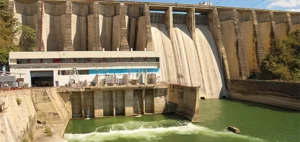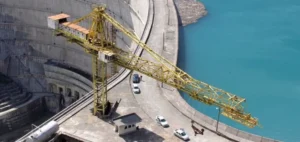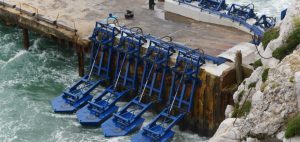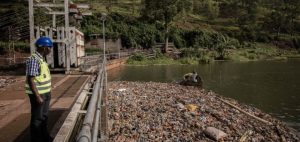The Lagdo hydroelectric dam in northern Cameroon opened its gates on September 18, 2024.
This infrastructure, crucial to power generation in the region, is currently releasing controlled volumes of water, in accordance with current protocols. The management of water releases is carefully monitored to avoid any uncontrolled overflow in downstream areas of the Benoué River, which also flows through Nigeria.
This decision follows heavy rainfall in both countries.
The gradual release of water is intended to regulate reservoir levels to avoid overloading the dam.
The Cameroonian authorities insist on the controlled nature of these operations, and assure us that the volumes released remain within defined limits, minimizing the risk of flooding in Nigerian areas further down the Benoue basin.
Nigerian authorities respond to concerns
In response to the opening of the dam, several Nigerian states expressed fears about potential flooding.
However, the Nigerian Hydrological Services Agency (NIHSA) was quick to calm concerns.
According to the agency, current water levels in the Benue River do not exceed alert thresholds.
The situation is considered to be under control, although vigilance is still required.
It is important to note that the flooding observed in Nigeria in recent weeks is not directly linked to the opening of the Lagdo dam.
According to NIHSA, these floods are mainly the result of heavy rains that have affected the region, independently of the dam’s water releases.
The controlled release of water by the Cameroonian authorities has therefore not significantly worsened the already difficult conditions downstream.
Cross-border management of water resources
The Benoue River, which rises in Cameroon before crossing into Nigeria, plays a central role in the management of the waters shared between the two nations.
Cross-border cooperation in water resource management has been a priority for the two governments for several years.
Indeed, any variation in water levels in the Benoue basin can have a direct impact on riparian populations on both sides of the border.
Cameroonian and Nigerian authorities are actively working together to coordinate water regulation efforts.
Regular discussions are held to exchange information on hydrological forecasts and ensure balanced flow management.
This ongoing dialogue helps to limit the risks associated with flooding, while ensuring optimum use of water resources for the agricultural, domestic and industrial needs of both countries.
Impact of precipitation on the region
This year, heavy rainfall caused significant damage in several Central and West African countries.
Torrential rains, combined with complex water infrastructure management, led to flooding in various regions.
Although the opening of the Lagdo dam is a factor to be taken into account, seasonal rains remain the main cause of flooding in Nigeria and other neighboring countries.
Upstream, the rains have also had an effect on water storage in Cameroon’s dams.
To prevent any risk of overloading, controlled releases are sometimes necessary, as is currently the case with the Lagdo dam.
However, this measure is subject to a strict protocol, validated by the local authorities in coordination with their Nigerian counterparts.
Future challenges for water resource management
Managing hydraulic infrastructure in Central and West Africa raises complex issues.
Between power generation, water resource management for agricultural irrigation and flood prevention, dam operators have to reconcile sometimes contradictory objectives.
The Lagdo dam, in particular, is a key element in Cameroon’s electricity supply, while having a direct impact on downstream riparian zones.
In this context, coordination between Cameroon and Nigeria becomes essential to guarantee the safety of populations, while optimizing the use of existing infrastructures.
The challenges posed by extreme rainfall and transboundary water flows call for rigorous planning and immediate responsiveness in the event of unforeseen events.





















